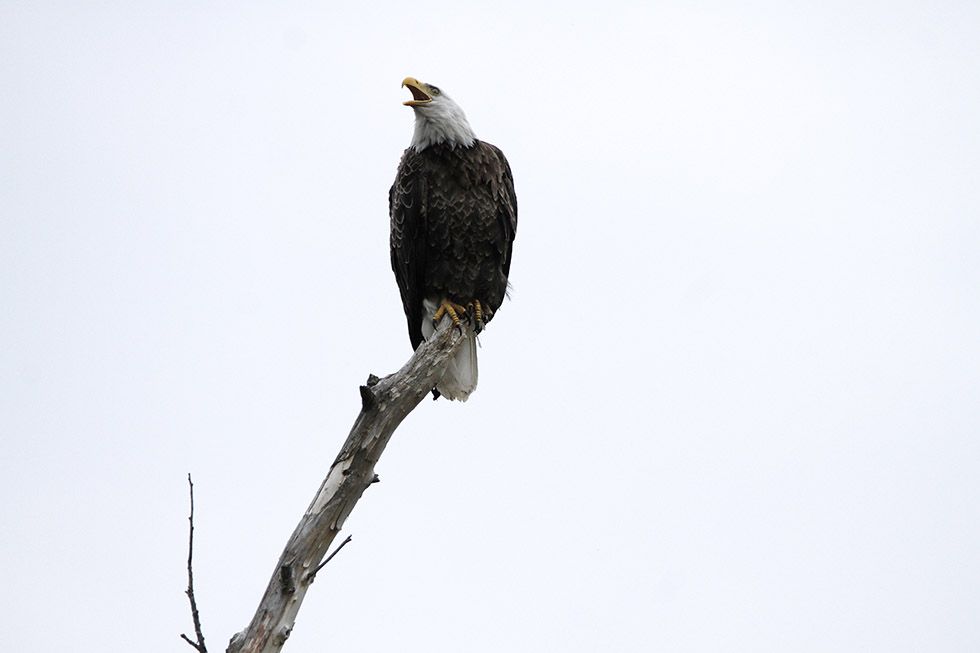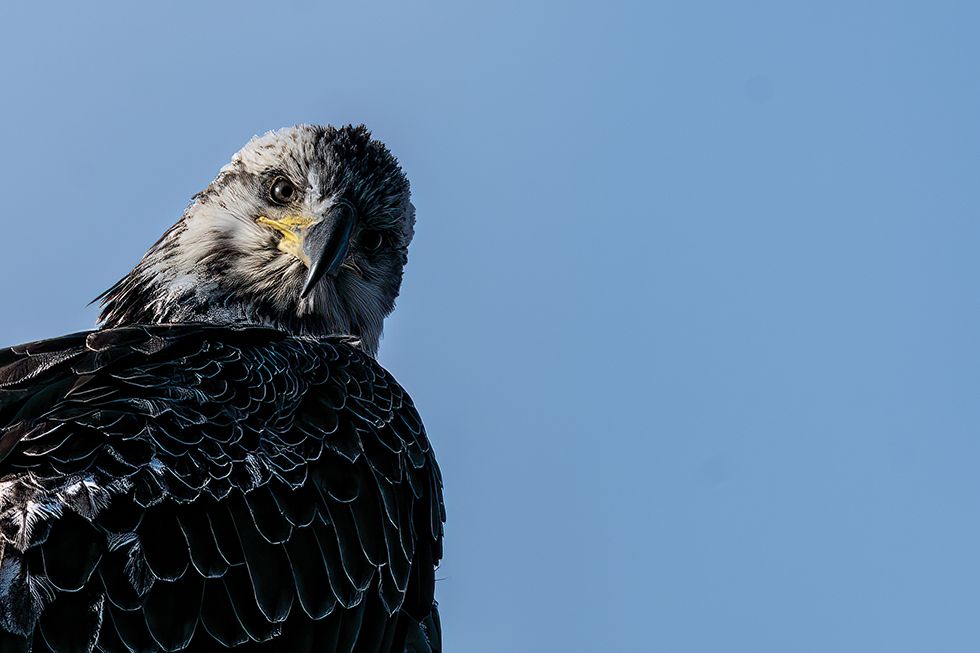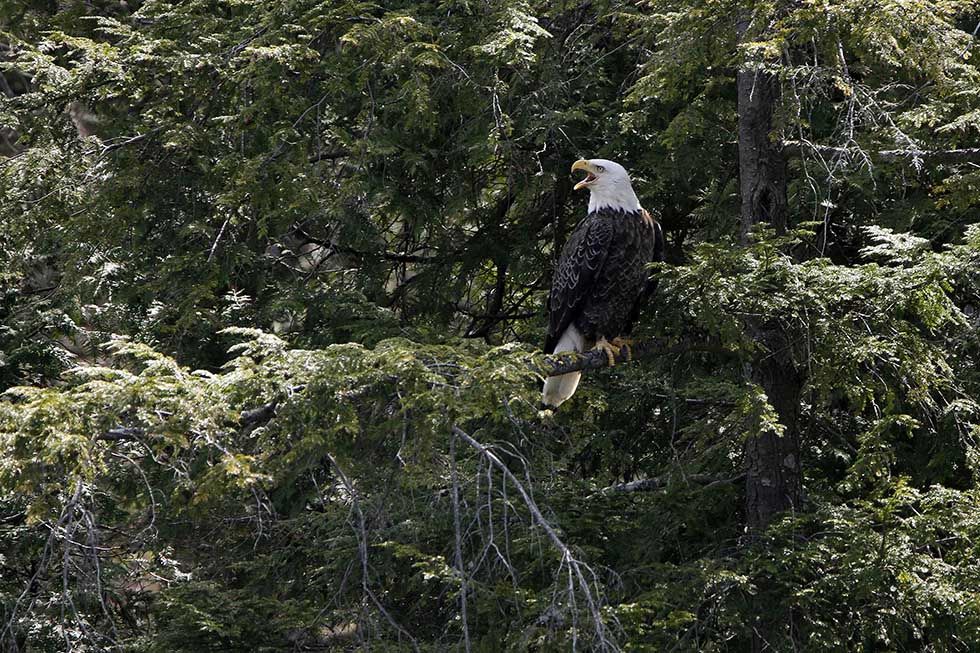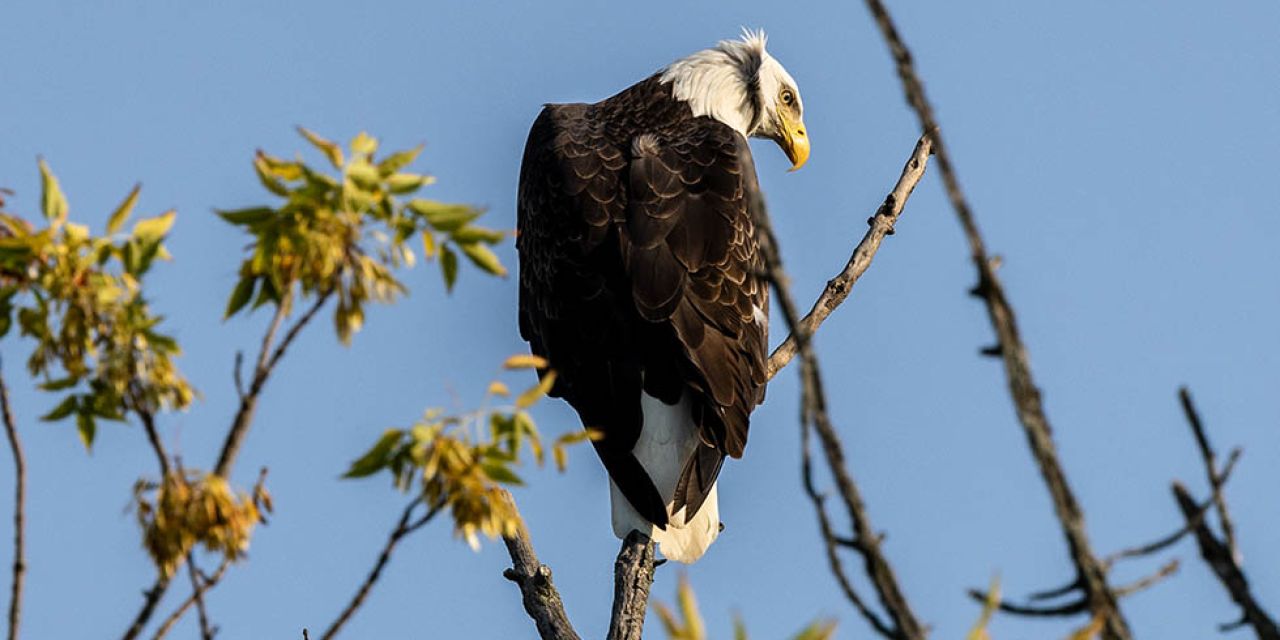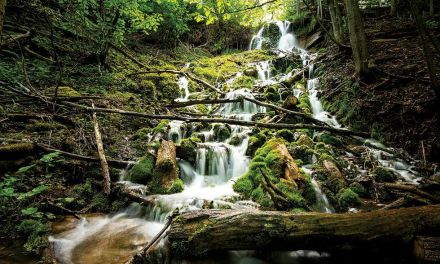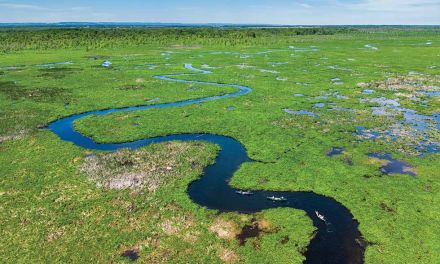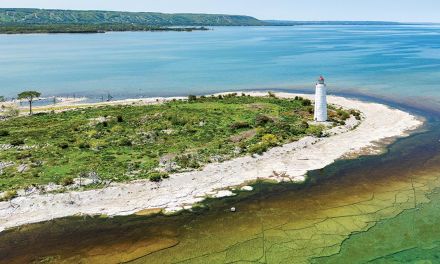Birds of Prey
Words by Cara Williams, Photography by Cameron Powell, Harvey Bodach and Cathy Wetterberg
In early fall of 2021 local wildlife artist Harvey Bodach witnessed a pair of bald eagles nesting along the Mill Pond marshlands in Thornbury. “I observed two mature eagles working the waters, searching for broken tree limbs and grabbing hold of large floating branches with their talons. Once on the endangered species list, the bald eagle has made a stunning recovery—their numbers declined as a result of exposure to a farming chemical that weakened the eggshell and prevented eagles from reproducing successfully. It was amazing to witness them here. I came back day after day to observe, photograph and eventually paint them.”
Haliaeetus leucocephalus, or bald eagle, is a large diurnal bird of prey, and the only sea eagle species in North America. With its white head, brown body, and hooked yellow beak, it is perhaps the most widely recognized raptor in North America. Once found in each of the continental US states, and all provinces and territories of Canada, by the mid-20th century, the population had declined as a result of the widespread use of the insecticide DDT (dchlorodiphenyltrichloroethane). By the 1970s the southern Ontario population was virtually decimated, and it was estimated that only three to eight pairs remained in existence.
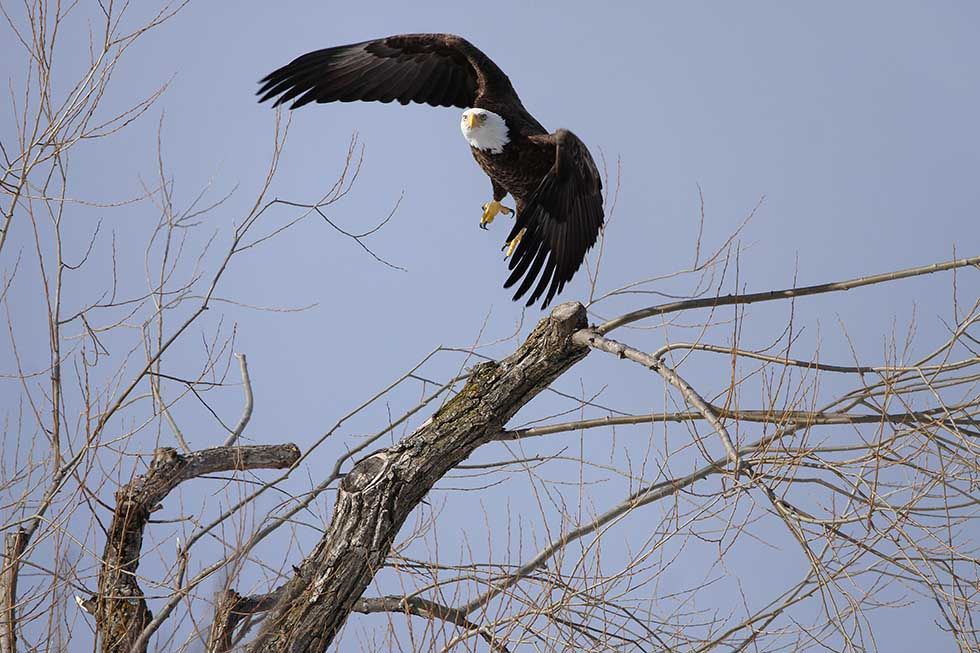
The recovery of the bald eagle began with the North American-wide prohibition on the use of DDT. Initial recovery was slow, as the persistence of DDT in the environment proved difficult to eliminate. The bald eagle population in the Great Lakes region recovered even slower due to contaminated fish. Over time, populations gradually began to increase thanks to supplementary recovery efforts such as contaminant sampling, habitat protection measures, the placement of nest platforms and the release of bald eagle nestlings.
“If you have travelled lately along the shores of the Great Lakes or inland country roads of southern Ontario you may have witnessed the return of the majestic bald eagle,” says Harvey. Stunned and awed to discover the Mill Pond pair last fall, Harvey began to track their behaviour. “I expanded my observation points as the eagles were spotted on tree perches that surrounded the marsh perimeter. On warmer days they would soar the skies above and stretch the boundaries over the marsh, but they would always come back. They would repeat this pattern daily, flying in the direction of the thickest parts of the marsh. When they returned, their approach to the marsh was low and from three basic directions. So, I triangulated this consistent pattern and with the use of Google Earth was able to pinpoint a general focal point that would turn out to be their nest.”
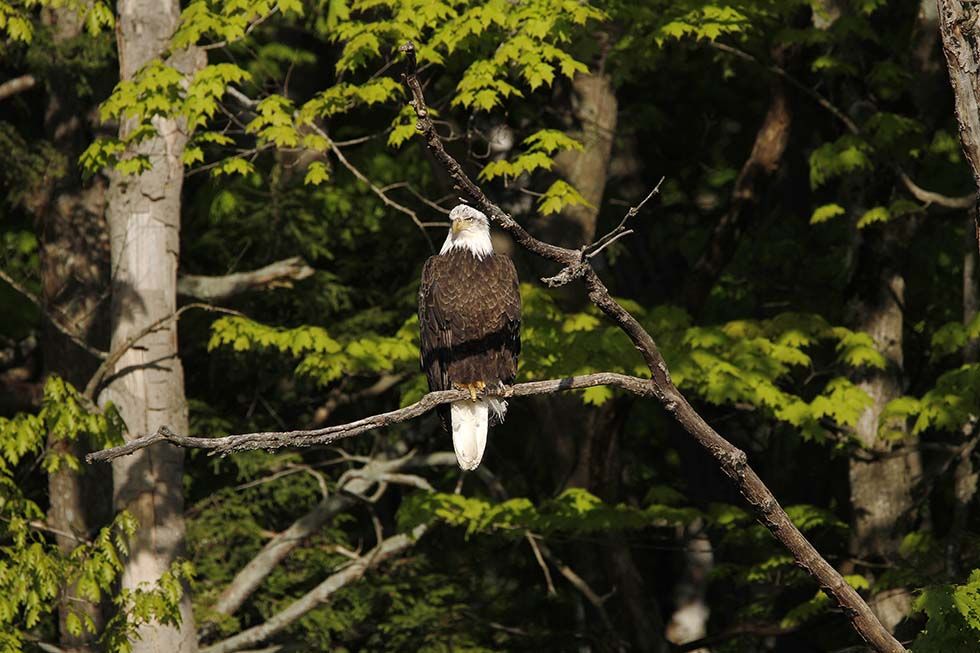
Once winter arrived Harvey followed the pair to the Georgian Bay shoreline, tracking their activities and observing them during the coldest months of the year. “Two consistent places where they would perch and hunt was the trees at the mouth of the Beaver River and Bayview park in Thornbury. This is where they would feed on the water fowl which hugged the edges of the ice packs.”
When spring arrived, the pair began feeding closer to “home” (aka their nest on the Mill Pond). “With both fish and water fowl being available from the Beaver River waters below their nest, I found a great observation point which provided a clear view of their comings and goings. One morning a surprise event was unfolding as both ducks and geese began returning from the southern latitudes. The eagles had just left their nest when a pair of Canadian geese flew onto the nesting platform. They flew in and out a couple of times and began establishing their presence. It was about an hour or so later that the eagles returned—one perched in a tree about 100 yards away, while the other came up from behind and circled the intruders. It was then that the geese took full notice and fled toward the Beaver River in fear, with the eagles trailing in hot pursuit. This was now a life and death situation.”
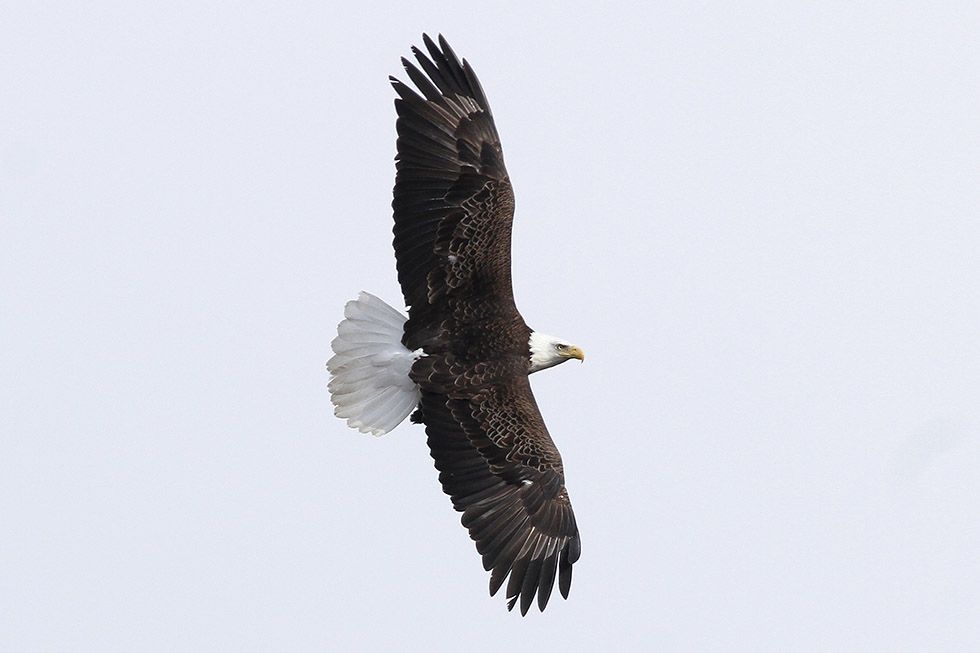

Harvey lost sight of the battle but the following weeks brought a change in the behavior of the eagles. “Two things stood out,” explains Harvey. “The eagles no longer reinforced their nest with tree limbs, and the frequency of visits to the nest was declining. It seems that the geese had disturbed the nest enough that the pair were now abandoning it. But, the possibility exists that the geese could have destroyed the eggs or even killed their eaglets.”
Bald Eagles show a strong fidelity to nesting territories and typically return to the same nest over successive years. Because they maintain a breeding territory near shallow waterbodies with abundant fish populations, they are susceptible to predators like geese. The young eaglets fledge at 10 to 11 weeks of age and have less than 50 percent chance of reaching adulthood. “Whatever transpired in the nest had completely changed the eagle pair’s activity.”
Bald eagles build large nests with sticks and branches and often return to reinforce and reclaim their nests each year. Assuming the eagles had abandoned their Mill Pond nest, Harvey left his perch, but popped by several times throughout the late spring and early summer. “There was little to no activity. Then at the end of the first week in September I finally spotted them! It is well known that nesting bald eagles’ mate for life and often return to former nests—this pair proved to be no exception.”
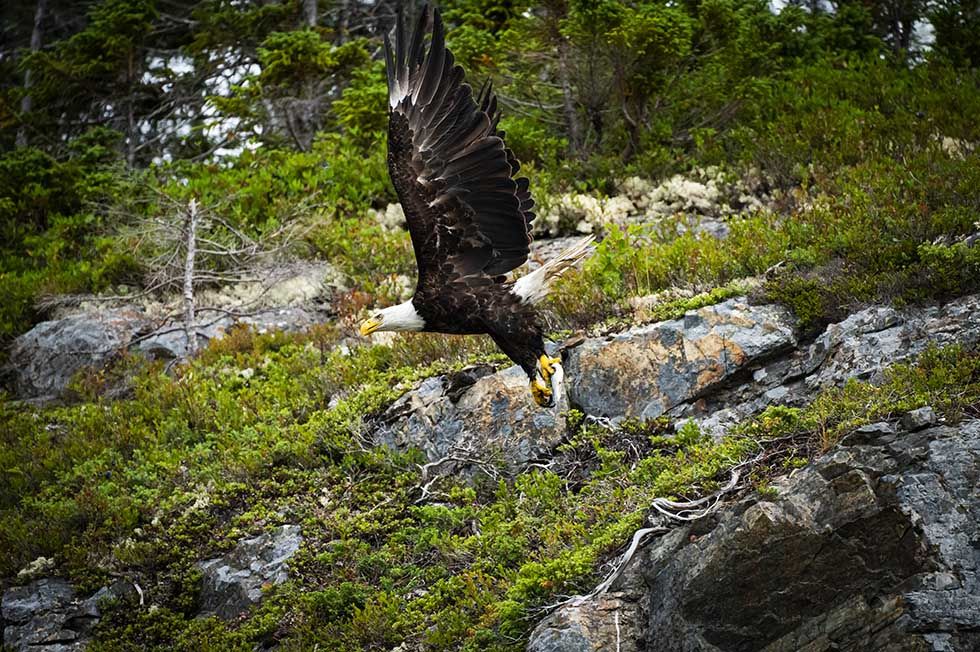
While the bald eagle population in Ontario is recovering, the species continues to have inherent vulnerabilities—as a predator that feeds primarily upon fish, they are extremely sensitive to chemical contaminants in aquatic systems. The US Environmental Protection Agency and Environment Canada continue to monitor chemical contamination in the Great Lakes under the Great Lakes Water Quality Agreement, an international environmental agreement first signed in 1972. Bald eagle nestlings have played an important role in that effort and were selected as one of several indicators of Great Lakes water quality in the late 1990s.
Like many wildlife artists, Harvey feels extremely fortunate to have witnessed this majestic species—one that has made a miraculous comeback—in his own backyard. “There is much in our world that makes us stop and ponder the mysteries of life. For me, it is the wonders of the natural world and the life that it contains that stir and hold me fixated—such as the excitement that comes with seeing a majestic bald eagle scanning the horizon from a cliff side perch. The observations I make prompt me to ask new questions as the wonders of creation open up for discovery.”
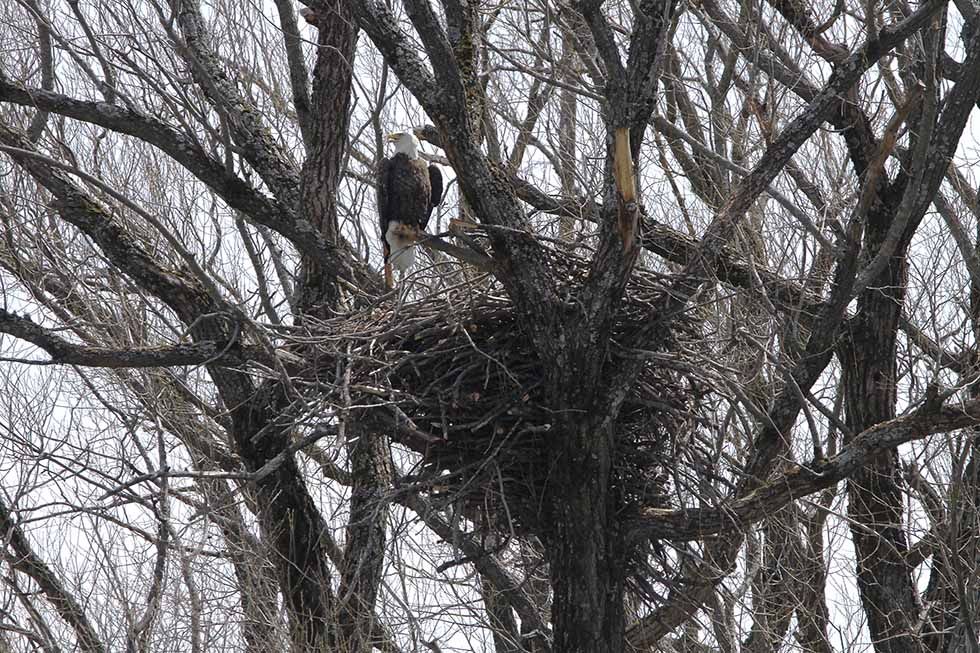
Fun Facts about southern Ontario bald eagles:
The bald eagle isn’t actually bald—its name comes from the word “piebald” which means spotty or patchy.
When a bald eagle loses a feather on one wing, it will lose a feather on the other in order to keep its balance.
A bald eagle can spot prey the size of a rabbit three miles away and can see four times farther than the average human.
The adult male is about 90cm (36”) long and has a wingspan of 2m (6.6ft), while females may reach 108cm (43”) in length and have a wingspan of 2.5m (8ft).
Bald eagles are capable of surviving in the wild for more than 30 years.
Bald eagles build the largest nest of any bird in North America and often have two to four alternate nests in the same territory.
